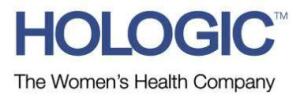por
Brendon Nafziger, DOTmed News Associate Editor | February 11, 2013
Hologic's president said in an earnings call last week that the company is "on track" to get reimbursements lined up for its 3-D mammography unit by the end of the year. The company, which makes women's health products and equipment, also said 3-D unit sales are still projected to reach original estimates even as 2-D mammo sales slump.
The Selenia Dimensions 3-D, the first breast tomosynthesis machine approved by the Food and Drug Administration, was released in winter 2011, but apparently the 3-D applications of the technology are still not reimbursed by most private payers or Medicare.
That could be changing.
In an earnings call last Monday, Hologic CEO Robert Cascella said the company was pursuing its three-point goal for reimbursement: working to get procedure codes hammered out with medical societies and the Centers for Medicare and Medicaid Services, and trying to set up a deal with private payers before the codes are finalized.
"We're hopeful we can confirm a meeting with CMS this quarter, and believe we are on track to achieve our goal of establishing reimbursement by the end of calendar 2013," Cascella said on the call, according to a
transcript hosted by Seeking Alpha.
Cascella said they could now pursue reimbursement as they waited for publication of results of the so-called Oslo study.
In the paper published last month in Radiology, researchers at Oslo University Hospital said adding the 3-D technology to normal 2-D cancer screenings resulted in a 27 percent increase in the detection of cancer, a 40 percent increase in the detection of invasive cancer and a 15 percent drop in false positives. And this happened without bumping up ductal carcinoma in situ detection rates, "which is non-invasive and cited as potentially being over-diagnosed," Hologic said.
Although it's "too early to tell" the complete sales impact of the study, Cascella credited it with driving a "significant increase" in interest. Presentations on tomo at the Radiological Society of North America's annual meeting in the fall also helped with a 10 percent boost in 3-D backorders, in both units and dollars, in the company's first fiscal quarter for 2013, he said.
The company still plans to meet its original estimates of doubling its U.S. installed base of 3-D units this year.
3-D system revenues rose 72 percent in the first quarter, although 2-D systems sales dropped 29 percent, Glenn P. Muir, the company's chief financial officer, said on the call.
"This is to be expected as the market shifts to 3-D, especially here in the United States," he said.
All told, the company's breast health division raked in $220.8 million in sales for the first quarter, up 2.5 percent from the first fiscal quarter last year. Product revenue fell 2.2 percent, or $3.2 million, while service revenue on the installed base grew $8.6 million, or 12.2 percent.
Cascella said that 3-D tomo is growing "with or without reimbursement" but that its long-term success rests on it. "(T)he broader adoption of this product, a year down the road or two years down the road, is certainly going to be highly dependent on that."
In total, the company reported $3.1 million in income on $631.4 million in sales for the first quarter, with profits down from $20.8 million during the same period last year, apparently largely due to acquisition costs for Gen-Probe.
